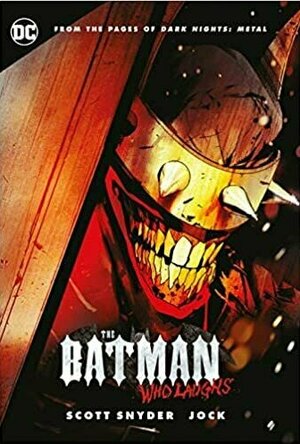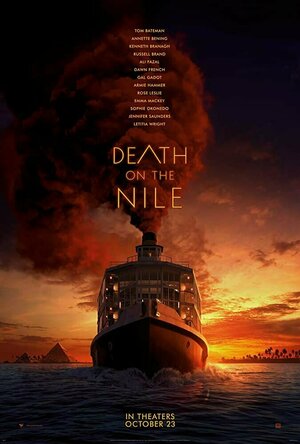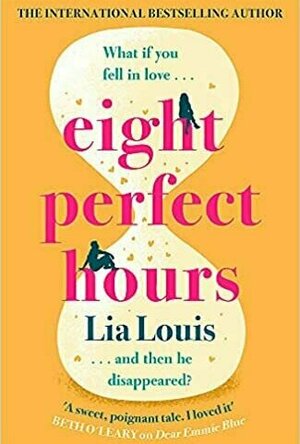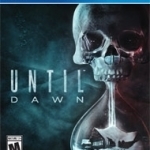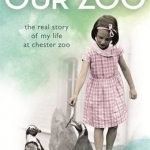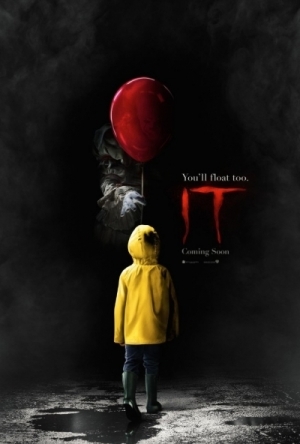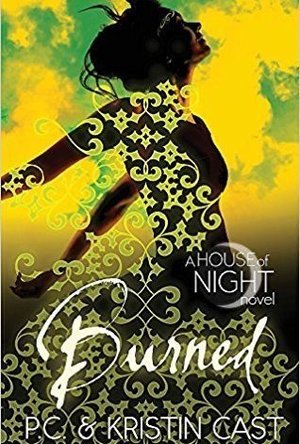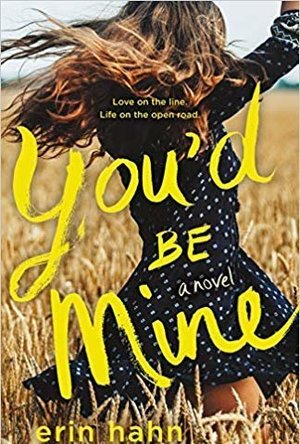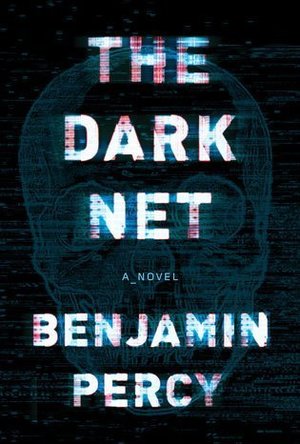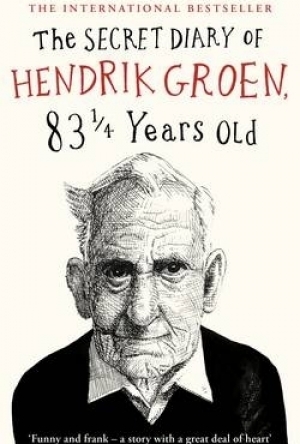Search
Search results
Joe Goodhart (27 KP) rated The Batman Who Laughs in Books
Nov 30, 2020
I am really eating up DC's books of late, especially the Scott Snyder and James Tynion IV! Yes, there are some hiccups along the way, as true for even the best of publishers, but the overall good output far outshines the bad/MEH output! I am quite liking this whole "Rebirth" thing and the way it ties into WATCHMEN, can't wait to see it all wrapped with DOOMSDAY CLOCK #12. <i>*ahem*</i> Let's not get ahead of ourselves then, eh? Onto my thoughts on TBWL..
I liked it quite a bit! Yes, it probably could easily have been a 5-issue mini, but I don't feel the story suffered by the added length. It allowed for the crazy roller coaster ride that it was to be even crazier, helped to spread just a bit more darkness in Gotham! Oh, and it showed how Alfred truly is the necessary light in Batman/Bruce's life, something B-Man totally needs, far more than Selina (sorry, Tom King, but I don't think the romance between the two works. Jus' sayin' is all!).
I know a lot of folks absolutely <b>abhor</b> DARK NIGHTS: METAL and anything relating to it, including the Batman Who Laughs! Me? I am enjoying it to no great end! It reminds me of some of the best things about the 90's, just turned up to 11! I think it's an interesting concept, bringing some clever creepiness into DC's "Rebirth"! And besides, it is at least something fresh and different (unlike the umpteenth X-deaths/reboots over at Marvel!)!
One aspect of the mini that really drove it all home was the art by Jock. I loved what he did in the WYTCHES (also with Snyder), and here it is just as good, if not better. The use of shadows and angles brings the creepiness all up and about, leaving with you long after the lights have gone out and sleep comes over you!
I already mentioned it, and several others have as well in their reviews, but Alfred was clearly the MVP here! He was totally on board, taking being a butler to a whole new level beyond 100%! I think sometimes he is under-utilized, but here he definitely got some much needed appreciation and respect! Kudos to you, Scott Snyder, for giving Alfred his due!
And lastly, that ending, the last couple panels? Ewwwww... chills!! Now, I can not wait to read Joshua Williamson's BATMAN/SUPERMAN #1! No spoilers, tho', promise!
So, yes, I was super-impressed with THE BATMAN WHO LAUGHS, just as I was with Snyder's DARK NIGHTS: METAL. If you didn't like METAL, then, well, chances are pretty likely you won't like this one!
I liked it quite a bit! Yes, it probably could easily have been a 5-issue mini, but I don't feel the story suffered by the added length. It allowed for the crazy roller coaster ride that it was to be even crazier, helped to spread just a bit more darkness in Gotham! Oh, and it showed how Alfred truly is the necessary light in Batman/Bruce's life, something B-Man totally needs, far more than Selina (sorry, Tom King, but I don't think the romance between the two works. Jus' sayin' is all!).
I know a lot of folks absolutely <b>abhor</b> DARK NIGHTS: METAL and anything relating to it, including the Batman Who Laughs! Me? I am enjoying it to no great end! It reminds me of some of the best things about the 90's, just turned up to 11! I think it's an interesting concept, bringing some clever creepiness into DC's "Rebirth"! And besides, it is at least something fresh and different (unlike the umpteenth X-deaths/reboots over at Marvel!)!
One aspect of the mini that really drove it all home was the art by Jock. I loved what he did in the WYTCHES (also with Snyder), and here it is just as good, if not better. The use of shadows and angles brings the creepiness all up and about, leaving with you long after the lights have gone out and sleep comes over you!
I already mentioned it, and several others have as well in their reviews, but Alfred was clearly the MVP here! He was totally on board, taking being a butler to a whole new level beyond 100%! I think sometimes he is under-utilized, but here he definitely got some much needed appreciation and respect! Kudos to you, Scott Snyder, for giving Alfred his due!
And lastly, that ending, the last couple panels? Ewwwww... chills!! Now, I can not wait to read Joshua Williamson's BATMAN/SUPERMAN #1! No spoilers, tho', promise!
So, yes, I was super-impressed with THE BATMAN WHO LAUGHS, just as I was with Snyder's DARK NIGHTS: METAL. If you didn't like METAL, then, well, chances are pretty likely you won't like this one!
Gareth von Kallenbach (980 KP) rated Death on the Nile (2022) in Movies
Feb 7, 2022
Originally set to release in December of 2019; the long-delayed cinematic retelling of Agatha Christie’s “Death on the Nile” has finally arrived in cinemas. The last cinematic version of the classic book arrived in 1978 and this time; Director and star Kenneth Branagh beings his version of Master Detective Hercule Poirot to Egypt after a chance encounter with his friend Bouc (Tom Bateman) while on vacation; Poirot attends the wedding of wealthy socialite Linette Ridgeway (Gal Gadot) and notices that she has married a man named Simon Doyle (Armie Hammer).
The wedding is a bit of a shock to many as just six weeks prior Doyle was engaged to Jacqueline de Bellefort (Emma Mackey), and Poirot observed the two of them in a London club and how Ridgeway was introduced to Simon by her friend Jacqueline.
The wedding reception is disrupted by the arrival of Jacqueline and Linette and Simon confides in Poirot that she has been following them around the world and asks the Detective to encourage her to leave them alone so they can get on with their life.
Jacqueline is highly disturbed and pleads her love for Simon and shows a gun which leads Poirot to encourage the newlyweds to abandon their overseas plans and go home. Simon and Linette press on and decide to take their wedding party on a cruise of the Nile in an attempt to get away from Jacqueline.
The plan seems to be working well until Jacqueline shows up as a ticketed passenger at a stop along the way. When a near-fatal accident occurs followed by a murder; Poirot must investigate the guests to find the killer. Naturally, there is plenty of motivation to go around, and as the deaths mount; Poirot must use his genius to find the killer.
The movie takes its time getting started but the CGI-enhanced scenery and the strong cast are very compelling and set the pieces in place very well. While I was able to solve the mystery about halfway into the film, some of the details around it were cleverly concealed and there were plenty of twists that had me consider other possible suspects.
Some may find the film a bit slow but that is the nature of a good mystery as time is given to developing the characters and their motives which adds to the suspense of the film.
In the end, the film is an engaging mystery that recalls the classic movie mysteries of old and it will be very interesting to see if audiences will embrace the film in the same way as they did with “Murder on the Orient Express” and audiences will get more Poirot adventures from Branagh in the near future.
4 stars out of 5.
The wedding is a bit of a shock to many as just six weeks prior Doyle was engaged to Jacqueline de Bellefort (Emma Mackey), and Poirot observed the two of them in a London club and how Ridgeway was introduced to Simon by her friend Jacqueline.
The wedding reception is disrupted by the arrival of Jacqueline and Linette and Simon confides in Poirot that she has been following them around the world and asks the Detective to encourage her to leave them alone so they can get on with their life.
Jacqueline is highly disturbed and pleads her love for Simon and shows a gun which leads Poirot to encourage the newlyweds to abandon their overseas plans and go home. Simon and Linette press on and decide to take their wedding party on a cruise of the Nile in an attempt to get away from Jacqueline.
The plan seems to be working well until Jacqueline shows up as a ticketed passenger at a stop along the way. When a near-fatal accident occurs followed by a murder; Poirot must investigate the guests to find the killer. Naturally, there is plenty of motivation to go around, and as the deaths mount; Poirot must use his genius to find the killer.
The movie takes its time getting started but the CGI-enhanced scenery and the strong cast are very compelling and set the pieces in place very well. While I was able to solve the mystery about halfway into the film, some of the details around it were cleverly concealed and there were plenty of twists that had me consider other possible suspects.
Some may find the film a bit slow but that is the nature of a good mystery as time is given to developing the characters and their motives which adds to the suspense of the film.
In the end, the film is an engaging mystery that recalls the classic movie mysteries of old and it will be very interesting to see if audiences will embrace the film in the same way as they did with “Murder on the Orient Express” and audiences will get more Poirot adventures from Branagh in the near future.
4 stars out of 5.
Kristy H (1252 KP) rated Eight Perfect Hours in Books
Oct 28, 2021
Noelle Butterby has recently broken up with her boyfriend of twelve years, Ed. Ed found Noelle pathetic for staying home to take care of her ill Mum and therefore being unwilling to travel to the States with him for a new job. But for Noelle, it's more than that. Her family obligations are both confining and all she has--leaving her unable to fulfill her own dreams, including opening her own flower shop. On her way to her university reunion--the first time she's been out in ages--Noelle finds herself trapped on a snowy roadway. With traffic stalled for hours, she meets Sam, the man in the car next to hers. They form a small friendship over the eight hours they're stuck, bonding while she charges her phone and they forage for food. In those few hours, Noelle is truly, actually happy. But the roadway is cleared and Sam drives off. Yet, somehow, after their snowy time together, the universe seems to continue to throw Sam and Noelle together. Each is dealing with their own relationship woes, but they feel drawn to one another. Are Sam and Noelle meant to be? And can Noelle find her own way while dealing with the weight of her family responsibility?
"Eight hours. Eight tiny hours is all they were. And already I miss them. Ridiculous. I am ridiculous."
I fell completely for this charming story. It's completely lovely, with such wonderful characters in Noelle and Sam, whom I found myself rooting for from the beginning. There are enough obstacles that I actually found myself wondering if they would wind up together, yet determined that they were meant to be. The book is so sweet yet has its serious moments as well, and it tackles mental health in a honest way, dealing with depression, agoraphobia, and post-partum issues quite well.
"And I feel--something. I don't know what exactly. Alive. Buzzy. Like my blood is rushing with stars, with electricity."
Both Sam and Noelle lost someone early in their lives, and some parts of this book will hit hard if you lost a loved one in your early twenties--their grief feels so real and raw (also a trigger warning for suicide). Their lives have been changed by these deaths, as well as hanging on to relationships that may not be the best for them. Watching them bond is so heartwarming. This is such a romantic read, with excellent pieces of chemistry and sexual tension--it's so well-done and builds quite excellently. This isn't insta-love, but a good slow burn that feels passionate and honest.
Overall, I really loved this one. The romance is excellent, and the message of finding your way together when it was meant to be is beautiful. 4.5 stars.
"Eight hours. Eight tiny hours is all they were. And already I miss them. Ridiculous. I am ridiculous."
I fell completely for this charming story. It's completely lovely, with such wonderful characters in Noelle and Sam, whom I found myself rooting for from the beginning. There are enough obstacles that I actually found myself wondering if they would wind up together, yet determined that they were meant to be. The book is so sweet yet has its serious moments as well, and it tackles mental health in a honest way, dealing with depression, agoraphobia, and post-partum issues quite well.
"And I feel--something. I don't know what exactly. Alive. Buzzy. Like my blood is rushing with stars, with electricity."
Both Sam and Noelle lost someone early in their lives, and some parts of this book will hit hard if you lost a loved one in your early twenties--their grief feels so real and raw (also a trigger warning for suicide). Their lives have been changed by these deaths, as well as hanging on to relationships that may not be the best for them. Watching them bond is so heartwarming. This is such a romantic read, with excellent pieces of chemistry and sexual tension--it's so well-done and builds quite excellently. This isn't insta-love, but a good slow burn that feels passionate and honest.
Overall, I really loved this one. The romance is excellent, and the message of finding your way together when it was meant to be is beautiful. 4.5 stars.
Daniel Boyd (1066 KP) rated Until Dawn in Video Games
Jul 21, 2017
Cast (1 more)
Graphics
A Bloody Good Time
This game by all accounts, should have been a flop. The fact that it was a cliché teen horror story, the fact that it started out as a move game for the ps3 and has had a long, unsteady development cycle and the fact that it was coming out in August, a time of year that is known as the stealth zone, as it is after the summer blockbuster season, but before the big fall line up drops. Yet, Supermassive games have managed to produce an engaging, genuinely scary story that plays on your expectations of this genre and succeeds in keeping the player engaged for a 10-12 hour story that follows the teens trying to survive through a horrific night of terror. I have been a gamer for the vast majority of my time on this earth and while I am very proud of that fact, I do realise that it may cloud my judgement somewhat and I could lose sight somewhat of what really makes a game special, which is why I will always greatly value an outsider’s opinion. I have been with my girlfriend for the past 3 years and before meeting me she was a casual gamer at best, playing Wii games and mobile games, I do believe she owned a PS1 when she was young but she definitely isn’t a gamer like I am. So, when I get a game and she watches me playing it and has a reaction more than just, ‘is this all you do?’ I know that it is something a bit more special than any old game. It happened with season 1 of Telltale’s Walking Dead, it happened with The Last Of Us and it happened a few nights ago with Until Dawn. As soon as I put the disc in and we played the first chapter, we were both hooked and dying to find out what happens next. This game is very well written, with an intriguing, engaging narrative coupled with purposefully written bad cheesy dialogue creating many memorable moments. The cast is very talented also, the facial capture in this game is very good and when playing you can see each tiny expression of fear or anger on the actor’s faces and the VO work is also pretty impeccable. Hayden Pannietre and Rami Malek stand out, as does Peter Stromare and the actor who plays Mike. The first quarter of the game is full of ‘mock’ scares that the group are seen pranking each other with, however not to an annoying extent. The scares that follow are very real with the next part of the game being reminiscent of a 70’s slasher movie. The atmosphere is built very well, with well timed audio cues and the use of a fixed camera working both as a homage to classic ps1 era horror games and as to give the player a feeling they are constantly being watched. Some camera angles are unsettling and the tracking shots can be particularly creepy, especially when you could have sworn that you saw something move in the far corner of the screen. The game then delves more into supernatural horror, which I will talk about more in the spoiler section of the review. Really though, there isn’t anything to spoil in this game in the respect that you can beat the game with everyone alive, or everybody dead. The only thing to spoil is how the characters die, which can be in a few different but increasingly gruesome ways which I won’t spoil here.
That’s not to say that everything that this game has to offer is positive, several of the big twists can be seen coming from a mile away, for example my better half guessed who the killer was going to be within the first hour of our playthrough, but other than that I am struggling to find any real criticisms in this game. It is just a fun experience that I would recommend to anyone, whether you are a horror fan or not.
Okay, spoiler time.
The twists in the game are fairly obvious. From very early on in the game it is clear that the ‘therapy’ sessions with Peter Stromare are a hallucination, probably a hallucination of the psycho in the clown mask and that psycho is probably Josh. All of these things come to pass, which means when they are revealed to be true the shock value is pretty much lost. It is also fairly obvious that there is something after the group besides the psycho, something that is more than likely to be supernatural. The only twist is finding out what that is and when it’s revealed to be the Gollum-like Wendigos, I was somewhat disappointed. The creatures are pretty cool in how they move, as they very twitchy and quick, but they are fairly generic and not all that scary once you know what they look like. The character deaths are quite well done, but half of the characters have fake ‘deaths,’ before their actual death scenes which makes the actual death scenes less impactful and somewhat fall flat.
Overall, Until Dawn is an engaging, entertaining experience that doesn’t really have any major flaws. For the most part the humour and the scares are well executed and while not all of the characters are likeable, they are all well written horror stereotypes that are played very well by their real life counterparts. This game was unexpectedly great by a number of people, and is seen as a surprise hit and likewise for me, it exceeded my expectations and served as a very pleasant and welcome addition to the modern horror genre.
That’s not to say that everything that this game has to offer is positive, several of the big twists can be seen coming from a mile away, for example my better half guessed who the killer was going to be within the first hour of our playthrough, but other than that I am struggling to find any real criticisms in this game. It is just a fun experience that I would recommend to anyone, whether you are a horror fan or not.
Okay, spoiler time.
The twists in the game are fairly obvious. From very early on in the game it is clear that the ‘therapy’ sessions with Peter Stromare are a hallucination, probably a hallucination of the psycho in the clown mask and that psycho is probably Josh. All of these things come to pass, which means when they are revealed to be true the shock value is pretty much lost. It is also fairly obvious that there is something after the group besides the psycho, something that is more than likely to be supernatural. The only twist is finding out what that is and when it’s revealed to be the Gollum-like Wendigos, I was somewhat disappointed. The creatures are pretty cool in how they move, as they very twitchy and quick, but they are fairly generic and not all that scary once you know what they look like. The character deaths are quite well done, but half of the characters have fake ‘deaths,’ before their actual death scenes which makes the actual death scenes less impactful and somewhat fall flat.
Overall, Until Dawn is an engaging, entertaining experience that doesn’t really have any major flaws. For the most part the humour and the scares are well executed and while not all of the characters are likeable, they are all well written horror stereotypes that are played very well by their real life counterparts. This game was unexpectedly great by a number of people, and is seen as a surprise hit and likewise for me, it exceeded my expectations and served as a very pleasant and welcome addition to the modern horror genre.
BBC Drama
This eBook was provided by the publisher via NetGalley in exchange for an honest review
Many people in Britain may have recently watched the drama series Our Zoo on BBC1 about the Mottershead family who moved to Oakfield, Upton in 1930 with the aim of building a zoo without bars. Based on a true story the drama over exaggerated the difficulties the family faced in developing what became to be the famous Chester Zoo. Until 2010 when TV producer Adam Kemp approached her, June Mottershead had never thought about making her history available to the public. As the truth had to be bent slightly for the television production with the removal of certain characters and added romance, and, of course, the laws preventing chimpanzees from being filmed, June Mottershead has penned the true story, also called Our Zoo, which is just as fascinating as what was shown on screen.
June was only four when she moved to Upton with her parents, grandparents, and her fourteen-year-old sister Muriel as well as a selection of animals. The BBC1 drama only showed up until the point that her father, George, had finally been given permission to build his zoo despite the petition against it. In the book, however, this occurs within the first few chapters and then continues on until June’s marriage to her husband Fred Williams in 1949. In fact the time period of the narrative jumps around depending on the animals or events that June is describing.
A large chunk of the book is focused on the effect the Second World War had on the zoo. As can be expected the rationings of vital products took its toll on the animals’ diets and, although the zoo never took a direct hit, the Liverpool blitz caused havoc by destroying the glass tanks in the aquarium. On the other hand, the amount of animals rapidly grew, as it was not just humans that became refugees during the war.
It was a delight to read about June’s relationships with some of the animals, particularly Mary the chimpanzee who was also June’s best friend as a child and behaved in a humanlike manner. Alas, as well as the happy moments there were the inevitable upsetting accounts of the deaths some of the animals, either from old age, illness or accidents.
While Our Zoo cannot be described as a novel, it neither has the feel of an autobiography. The conversational tone of the writing made it a pleasure to read and easy to visualize (admittedly watching the televised version had already provided a certain image).
This easy to read book is a strong recommendation for those who enjoyed the BBC adaptation and wish to find out what happened next. It does not matter if you have not watched the drama, as it is overall a fascinating story to read.
Many people in Britain may have recently watched the drama series Our Zoo on BBC1 about the Mottershead family who moved to Oakfield, Upton in 1930 with the aim of building a zoo without bars. Based on a true story the drama over exaggerated the difficulties the family faced in developing what became to be the famous Chester Zoo. Until 2010 when TV producer Adam Kemp approached her, June Mottershead had never thought about making her history available to the public. As the truth had to be bent slightly for the television production with the removal of certain characters and added romance, and, of course, the laws preventing chimpanzees from being filmed, June Mottershead has penned the true story, also called Our Zoo, which is just as fascinating as what was shown on screen.
June was only four when she moved to Upton with her parents, grandparents, and her fourteen-year-old sister Muriel as well as a selection of animals. The BBC1 drama only showed up until the point that her father, George, had finally been given permission to build his zoo despite the petition against it. In the book, however, this occurs within the first few chapters and then continues on until June’s marriage to her husband Fred Williams in 1949. In fact the time period of the narrative jumps around depending on the animals or events that June is describing.
A large chunk of the book is focused on the effect the Second World War had on the zoo. As can be expected the rationings of vital products took its toll on the animals’ diets and, although the zoo never took a direct hit, the Liverpool blitz caused havoc by destroying the glass tanks in the aquarium. On the other hand, the amount of animals rapidly grew, as it was not just humans that became refugees during the war.
It was a delight to read about June’s relationships with some of the animals, particularly Mary the chimpanzee who was also June’s best friend as a child and behaved in a humanlike manner. Alas, as well as the happy moments there were the inevitable upsetting accounts of the deaths some of the animals, either from old age, illness or accidents.
While Our Zoo cannot be described as a novel, it neither has the feel of an autobiography. The conversational tone of the writing made it a pleasure to read and easy to visualize (admittedly watching the televised version had already provided a certain image).
This easy to read book is a strong recommendation for those who enjoyed the BBC adaptation and wish to find out what happened next. It does not matter if you have not watched the drama, as it is overall a fascinating story to read.
The kids are amazing (1 more)
So is Pennywise!
If you're of a certain age you'll probably remember the 'It' TV mini series of 1990, based on Stephen Kings classic novel. And you'll also have lasting memories of Tim Curry as Pennywise, the demonic clown who terrorises the town of Derry, Maine. His was the definitive evil clown, the benchmark for all scary movie clowns to come. This big screen version remake had a lot to live up to.
We meet the new Pennywise pretty early on in the movie as young Georgie ventures out into the heavy rain to play with the paper boat that he and older brother Bill just made. Anyone familiar with the story, or the trailer for the movie, knows exactly what's coming, so it's no surprise when Pennywise appears in the drain where Georgie loses his boat. Calmly menacing, and excellently played by Bill Skarsgård, but sounding strangely like Scooby-Doo as he chats away to Georgie, which kind of made him more funny than scary. It's not until he bites off Georgie's arm and drags him down into the sewer that you know he means business.
From there, Pennywise takes a bit of a backseat as we're introduced to our core cast of kids. It's been a while since Georgie disappeared and kids are still going missing around town, meaning there's now a 7pm curfew in effect. Bill is still mourning the loss of younger brother Georgie and his group of friends all have their own personal issues and demons too. These are gradually explored throughout the movie and are in some ways more sad and disturbing than Pennywise. On top of that, the local bully and his gang like to make their lives hell too and all of this is just hugely enjoyable, giving off a wonderful Stand By Me/The Goonies/Stranger Things feel, even more so as the movie is set in the 80s. The kids swear, make jokes together and at the expense of each other. They ride their bikes around town, have rock fights with the bullies and the entire cast is just a joy to watch.
Eventually, Pennywise steps things up a notch as he begins appearing to each of the kids, playing on their fears as he tries to lure them to their deaths. His appearances tend to involve a creepy, chilling build up, followed by a surprisingly effective jump scare (certainly some of the women in nearby seats to me seemed to be constantly on the brink of having a heart attack!). The scares become increasingly inventive and enjoyable as the movie progresses and while not as scary and gory as some might like, they still manage to work well within the whole movie.
I had a lot of fun watching It. And this is only Chapter One of a two part series, with Chapter Two set to focus on the part of the story where the kids are all adults. I can't wait to see what comes next!
We meet the new Pennywise pretty early on in the movie as young Georgie ventures out into the heavy rain to play with the paper boat that he and older brother Bill just made. Anyone familiar with the story, or the trailer for the movie, knows exactly what's coming, so it's no surprise when Pennywise appears in the drain where Georgie loses his boat. Calmly menacing, and excellently played by Bill Skarsgård, but sounding strangely like Scooby-Doo as he chats away to Georgie, which kind of made him more funny than scary. It's not until he bites off Georgie's arm and drags him down into the sewer that you know he means business.
From there, Pennywise takes a bit of a backseat as we're introduced to our core cast of kids. It's been a while since Georgie disappeared and kids are still going missing around town, meaning there's now a 7pm curfew in effect. Bill is still mourning the loss of younger brother Georgie and his group of friends all have their own personal issues and demons too. These are gradually explored throughout the movie and are in some ways more sad and disturbing than Pennywise. On top of that, the local bully and his gang like to make their lives hell too and all of this is just hugely enjoyable, giving off a wonderful Stand By Me/The Goonies/Stranger Things feel, even more so as the movie is set in the 80s. The kids swear, make jokes together and at the expense of each other. They ride their bikes around town, have rock fights with the bullies and the entire cast is just a joy to watch.
Eventually, Pennywise steps things up a notch as he begins appearing to each of the kids, playing on their fears as he tries to lure them to their deaths. His appearances tend to involve a creepy, chilling build up, followed by a surprisingly effective jump scare (certainly some of the women in nearby seats to me seemed to be constantly on the brink of having a heart attack!). The scares become increasingly inventive and enjoyable as the movie progresses and while not as scary and gory as some might like, they still manage to work well within the whole movie.
I had a lot of fun watching It. And this is only Chapter One of a two part series, with Chapter Two set to focus on the part of the story where the kids are all adults. I can't wait to see what comes next!
Rachel King (13 KP) rated Burned (House of Night, #7) in Books
Feb 11, 2019
I liked this book a bit more than the previous book in the series simply because it looks like some of the characters are maturing passed some of their more annoying tweeny quirks and developing some depth. Stevie Rae always bugged me in previous books for her cliche hick-like speech and tastes in clothes, etc., but in this book, she starts to discover that the lines between good and evil are sometimes much harder to discern as she tries to juggle her relationship with Rephaim and still be what everyone else in her life wants her to be. She does this by lying, lying, lying, which is very bad, but at least she is taking risks to truly do the right thing, even if she is going about it the very wrong way. What did bug me was that the way she was caught between Dallas and Rephaim felt like the authors were attempting to make her be some kind of Zoey copycat, and the way Stevie Rae was handling the situation so poorly pretty much made it a forgone conclusion that whomever she hurt more would be the one going evil, making her the responsible party, even though the guy making the choice should be responsible for his own decisions.
I also like the maturity that James Stark reaches in his quest to save Zoey. While it is cliche to say that love conquers all, his love for her forces him to grow up and be a man, instead of just a petty, jealous, hormonal teen. The lengths he goes to save her could put a few grown men to shame, and if she ever rejects him in future books for any reason at all, she does not deserve him.
On the flip side, Zoey's other friends, i. e. Damien, Jack, and the twins are barely even mentioned throughout the entire book, except to provide color for the background or some comic relief. I don't really miss them, either, as their antics are so formulaic as to make me cringe every time I read about them.
I am undecided as to whether I like Aphrodite's character. While she does not seem to be growing in maturity very much - as in losing her bitchiness - she does seem to be coming to terms with how she appears to others. At the same time, she is learning to wield her arrogance with purpose as she gains the title of Prophetess and show some true emotion for her friends.
I really hope that this series wraps up soon, as this plot feels like it is spiraling out of control with all of the loose ends, unexplained pieces, and growing cast list that simply can not be given enough attention to detail in every single book, even with the random deaths of several characters in a single book.
I also like the maturity that James Stark reaches in his quest to save Zoey. While it is cliche to say that love conquers all, his love for her forces him to grow up and be a man, instead of just a petty, jealous, hormonal teen. The lengths he goes to save her could put a few grown men to shame, and if she ever rejects him in future books for any reason at all, she does not deserve him.
On the flip side, Zoey's other friends, i. e. Damien, Jack, and the twins are barely even mentioned throughout the entire book, except to provide color for the background or some comic relief. I don't really miss them, either, as their antics are so formulaic as to make me cringe every time I read about them.
I am undecided as to whether I like Aphrodite's character. While she does not seem to be growing in maturity very much - as in losing her bitchiness - she does seem to be coming to terms with how she appears to others. At the same time, she is learning to wield her arrogance with purpose as she gains the title of Prophetess and show some true emotion for her friends.
I really hope that this series wraps up soon, as this plot feels like it is spiraling out of control with all of the loose ends, unexplained pieces, and growing cast list that simply can not be given enough attention to detail in every single book, even with the random deaths of several characters in a single book.
Kristy H (1252 KP) rated You'd Be Mine in Books
Apr 4, 2019
I was so excited to read this book, because I love country music with all my heart, especially some of the older music that Hahn weaves into this book. I read this on the heels of WHEN IT'S REAL and couldn't help but compare the two. I fell hard for REAL. My reaction for MINE varied, though I still enjoyed it a lot; for sure, the two--while romances--are very dissimilar in many ways.
This book has some really dark tones to it, and both Clay and Annie are struggling with some major demons. Each have dealt with some major sadness in their lives, and Annie's past with her parents is honestly just awful. As a result, this isn't a light, fluffy romance, and it has some surprising emotional depth to it and its characters. Annie, especially, is really easy to like and to root for.
"Everything in me speaks music with a fluent tongue. Surely it's genetic, but my parents certainly haven't done me any favors. If anything, their deaths nearly killed the music in my soul."
As I said, I quite enjoyed the music aspect of the book. Not just the country music part, but the overall fact that the book is centered around a tour. It's really fun to get glimpses into tour life--especially since everyone is so young. Pretty crazy how much responsibility and freedom they all have. There's also a lot of songwriting and emotions displayed through songwriting, which I loved. (Side note: As a child, I always dreamed of being a country singer-songwriter. This was probably due to my intense love of Mary Chapin Carpenter, which lives on to this day. Alas, I cannot carry a tune or read music, so this dream has yet to come to fruition.)
"That's the glorious thing about music. It speaks to the very heart of things in the most absolute and obtrusive way."
The one hard thing for me was that the book got rather repetitive in the middle with both Clay and Annie going on about how they were wrong for each other. It seemed to stall the plot for a while, as I felt like we were waiting for a bit for something to happen. Yes, we realize each was damaged, but it seemed like the book hit on that just a little too much/too often for a while.
Still, this was a really good read. It's very emotional and honestly heartbreaking at times. If you're a music buff, I think you'll enjoy it even more, because of all the musical scenes and songs woven into the book. The characters are very real and go through a lot. There's no insta-romance, and you will root for Annie and Clay, even though you'll want things to move along a bit in the middle. I totally cried at the end, which is a major sign that Hahn did a good job. 3.75 stars, rounded to 4.
This book has some really dark tones to it, and both Clay and Annie are struggling with some major demons. Each have dealt with some major sadness in their lives, and Annie's past with her parents is honestly just awful. As a result, this isn't a light, fluffy romance, and it has some surprising emotional depth to it and its characters. Annie, especially, is really easy to like and to root for.
"Everything in me speaks music with a fluent tongue. Surely it's genetic, but my parents certainly haven't done me any favors. If anything, their deaths nearly killed the music in my soul."
As I said, I quite enjoyed the music aspect of the book. Not just the country music part, but the overall fact that the book is centered around a tour. It's really fun to get glimpses into tour life--especially since everyone is so young. Pretty crazy how much responsibility and freedom they all have. There's also a lot of songwriting and emotions displayed through songwriting, which I loved. (Side note: As a child, I always dreamed of being a country singer-songwriter. This was probably due to my intense love of Mary Chapin Carpenter, which lives on to this day. Alas, I cannot carry a tune or read music, so this dream has yet to come to fruition.)
"That's the glorious thing about music. It speaks to the very heart of things in the most absolute and obtrusive way."
The one hard thing for me was that the book got rather repetitive in the middle with both Clay and Annie going on about how they were wrong for each other. It seemed to stall the plot for a while, as I felt like we were waiting for a bit for something to happen. Yes, we realize each was damaged, but it seemed like the book hit on that just a little too much/too often for a while.
Still, this was a really good read. It's very emotional and honestly heartbreaking at times. If you're a music buff, I think you'll enjoy it even more, because of all the musical scenes and songs woven into the book. The characters are very real and go through a lot. There's no insta-romance, and you will root for Annie and Clay, even though you'll want things to move along a bit in the middle. I totally cried at the end, which is a major sign that Hahn did a good job. 3.75 stars, rounded to 4.
Zuky the BookBum (15 KP) rated The Dark Net in Books
Mar 15, 2018
I really think that the synopsis for this book is not up to scratch! Although, yes, the synopsis is what initially drew me to this book, after reading it I can say that the book is <i><b>WAY</b></i> better than the synopsis would make you believe!
This book tackles the subject of good and evil, with references to demons and black magic which I didnt get at all from the synopsis! I was expecting this to have a much deeper involvement with the dark net, whats on it and how its used. While yes, there is that to the book, its not necessarily its main focus.
To begin with, this lack of talk about the dark net actually made me hesitant about the book. I was expecting something so much different to what I was reading, I felt really disappointed. But, that feeling didnt last for long. This is so unlike anything Ive ever read before and that made everything about this book really exciting. Not to mention, this is a super clever book! It uses real life scenarios that we can all relate to, or at least know about, and explains it with a black magic twist.
For example, when talking about demon possession, it explains how small demons can take over and that causes a man to plow a lorry through a busy crowd, or a school shooting a one off awful occasion in history. But when a big, strong demon comes along, it can posses not only a person, but a nation. It uses examples of the Holocaust and the Rwandan Genocide, which I thought was really smart!
Characters in this book were excellent, but there were quite a lot of them that we needed to get to know. Juniper was by far my favourite of the bunch, Sarin coming in at a close second. I loved that there was a strong, bad-ass female character who wasnt irritating (Lela, Im looking at you!).
As for the story, I will say that it feels a bit all over the place at times. Its not difficult to wrap your head around but there are a lot of things pulled in to the story at different times and this sometimes got a bit manic. This is classed as a horror novel, and for me, there definitely were some creepy bits. The hounds especially made my skin crawl.
Overall, I ended up really loving this novel. It was short and sweet (although it almost took me a whole 7 days to read), and it was exciting, creepy and fast-paced! A great novel for anyone who likes a darker thriller. Lots of gruesome deaths and bad-ass characters.
<i>Thanks to BookBridgr and Hodder & Stoughton for sending me an ARC in exchange for an honest review.</i>
This book tackles the subject of good and evil, with references to demons and black magic which I didnt get at all from the synopsis! I was expecting this to have a much deeper involvement with the dark net, whats on it and how its used. While yes, there is that to the book, its not necessarily its main focus.
To begin with, this lack of talk about the dark net actually made me hesitant about the book. I was expecting something so much different to what I was reading, I felt really disappointed. But, that feeling didnt last for long. This is so unlike anything Ive ever read before and that made everything about this book really exciting. Not to mention, this is a super clever book! It uses real life scenarios that we can all relate to, or at least know about, and explains it with a black magic twist.
For example, when talking about demon possession, it explains how small demons can take over and that causes a man to plow a lorry through a busy crowd, or a school shooting a one off awful occasion in history. But when a big, strong demon comes along, it can posses not only a person, but a nation. It uses examples of the Holocaust and the Rwandan Genocide, which I thought was really smart!
Characters in this book were excellent, but there were quite a lot of them that we needed to get to know. Juniper was by far my favourite of the bunch, Sarin coming in at a close second. I loved that there was a strong, bad-ass female character who wasnt irritating (Lela, Im looking at you!).
As for the story, I will say that it feels a bit all over the place at times. Its not difficult to wrap your head around but there are a lot of things pulled in to the story at different times and this sometimes got a bit manic. This is classed as a horror novel, and for me, there definitely were some creepy bits. The hounds especially made my skin crawl.
Overall, I ended up really loving this novel. It was short and sweet (although it almost took me a whole 7 days to read), and it was exciting, creepy and fast-paced! A great novel for anyone who likes a darker thriller. Lots of gruesome deaths and bad-ass characters.
<i>Thanks to BookBridgr and Hodder & Stoughton for sending me an ARC in exchange for an honest review.</i>
Hazel (1853 KP) rated The Secret Diary of Hendrik Groen, 83 Years Old in Books
Dec 7, 2018
<i>This ARC was provided by the publisher via NetGalley in exchange for an honest review </i>
Think <i>Adrian Plass</i> but with octogenarians and this is the result. <i>The Secret Diary of Hendrik Groen, 83 ¼ Years Old</i> is a years long journal beginning on 1st January 2013. Hendrik hates old people, an unfortunate predicament as he live in a home for the elderly. He set himself the task of writing a daily account about the “life of the inmates of a care home in North Amsterdam,” with the purpose of it being read after his death by readers, or “inmates” who wish to know what to expect in their old age.
Whether the contents of this diary are true or exaggerated does not matter, as what it produces is a laugh-out-loud story, a pleasure to read. From cake in the fish tank, to complaints about leaky nether regions, Hendrik provides a brutally honest account of the highs and lows of being an OAP.
<i>The Secret Diary of Hendrik Groen, 83 ¼ Years Old</i> encompasses a selection of unique and presumably real characters. Readers are bound to discover someone who reminds them of an elderly relative, or even themselves! There is the diabetic, rude, gin loving Evert – Henrdik’s best friend of many years – who is never without a witty comeback for the bossy, self-important director of the home. On the other hand, levelheaded Eefje, who Hendrik is rather fond of, shows a completely different view of elderly mentality. Despite the stereotypes associated with care home patients, Hendrik and friends still have as much fun as possible; after all, they may be Old but not Dead.
Speaking of dead, Hendrik makes a number of jokes and references to euthanasia, which may seem like poor taste to some readers. However, when all the friends around you are literally living the final years of their lives, why not joke about it instead of worry? Naturally there are sad diary entries about the inevitable deaths of his contemporaries throughout the year, but Hendrik does not let it get him down for long. Hendrik and his close friends make the most of the time they have left, and if that involves speeding along the roads of Amsterdam on their souped-up mobility scooters, then that is exactly what they will do.
<i>The Secret Diary of Hendrik Groen, 83 ¼ Years Old</i> is a gem of a book and comes highly recommended to readers of all ages. Hendrik ‘s effortlessly funny, sarcastic remarks stress what the average citizen is too polite to voice. Once you begin it is hard to put down. Unfortunately a year is not long enough and you will end up wanting more. Whatever the future holds for us, let’s hope we become someone like Hendrik Groen.
Think <i>Adrian Plass</i> but with octogenarians and this is the result. <i>The Secret Diary of Hendrik Groen, 83 ¼ Years Old</i> is a years long journal beginning on 1st January 2013. Hendrik hates old people, an unfortunate predicament as he live in a home for the elderly. He set himself the task of writing a daily account about the “life of the inmates of a care home in North Amsterdam,” with the purpose of it being read after his death by readers, or “inmates” who wish to know what to expect in their old age.
Whether the contents of this diary are true or exaggerated does not matter, as what it produces is a laugh-out-loud story, a pleasure to read. From cake in the fish tank, to complaints about leaky nether regions, Hendrik provides a brutally honest account of the highs and lows of being an OAP.
<i>The Secret Diary of Hendrik Groen, 83 ¼ Years Old</i> encompasses a selection of unique and presumably real characters. Readers are bound to discover someone who reminds them of an elderly relative, or even themselves! There is the diabetic, rude, gin loving Evert – Henrdik’s best friend of many years – who is never without a witty comeback for the bossy, self-important director of the home. On the other hand, levelheaded Eefje, who Hendrik is rather fond of, shows a completely different view of elderly mentality. Despite the stereotypes associated with care home patients, Hendrik and friends still have as much fun as possible; after all, they may be Old but not Dead.
Speaking of dead, Hendrik makes a number of jokes and references to euthanasia, which may seem like poor taste to some readers. However, when all the friends around you are literally living the final years of their lives, why not joke about it instead of worry? Naturally there are sad diary entries about the inevitable deaths of his contemporaries throughout the year, but Hendrik does not let it get him down for long. Hendrik and his close friends make the most of the time they have left, and if that involves speeding along the roads of Amsterdam on their souped-up mobility scooters, then that is exactly what they will do.
<i>The Secret Diary of Hendrik Groen, 83 ¼ Years Old</i> is a gem of a book and comes highly recommended to readers of all ages. Hendrik ‘s effortlessly funny, sarcastic remarks stress what the average citizen is too polite to voice. Once you begin it is hard to put down. Unfortunately a year is not long enough and you will end up wanting more. Whatever the future holds for us, let’s hope we become someone like Hendrik Groen.
